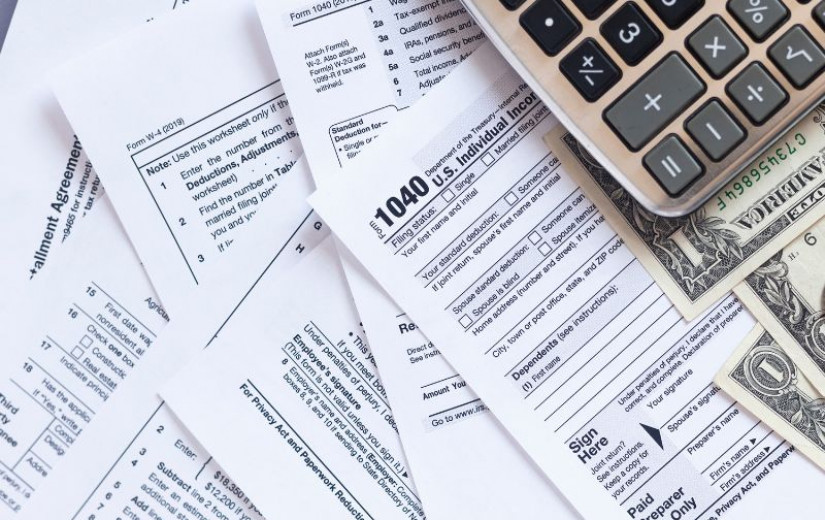
STERLING, VA - FEB6: Kindergarten students at Guilford Elementary school, sing and dance in music ... [+] class, February 6, 2015. The school system in Loudoun County, one of the wealthiest counties in the US by some measures, only provides full-day kindergarten at Title I schools like Guilford, which receive special federal funding because of high rates of poverty. Because Guilford is full-day, it's able to offer its five-year-olds things like PE, arts, music and more lessons on core subjects like math and reading. (Photo by Evelyn Hockstein/For The Washington Post via Getty Images)
Recently announced scores on NAEP, the Nation’s Report Card, show that there is more to be done to make up lost learning ground in the wake of the pandemic, close historic achievement and opportunity gaps, and reimagine education in our country. The most recent scores, which declined again on average in both fourth and eighth grade reading and improved only slightly in math, showed a growing achievement gap stimulated largely by the drop in the scores of the lowest-performing students—those in the bottom 25% of test-takers.
Some have used the pandemic-induced achievement declines to claim that—especially considering federal investments in pandemic relief—money does not matter for education success and that large cuts to federal and state aid to public education would thus be justified. However, a close look at the research and the current context demonstrates otherwise—that money, well-spent and focused on those in greatest need, does matter and is especially needed at this time.
What Has Contributed To Score Declines?
Clearly the pandemic experience has had a negative—but differential—effect on many American families, with more affluent families experiencing smaller challenges and recovering quickly, while low-income families have experienced longer-lasting challenges to their physical and financial health and welfare. Low-income families in higher-need communities were more likely to lose family members to Covid-19 and to subsequent respiratory illnesses, to lose employment and housing, and to suffer food instability and poorer access to healthcare. These families also were less likely to have the technology supports needed to engage educationally during Covid-related school closures and the many severe weather–related disruptions that have happened since, from North Carolina to Texas to California to Florida.
These conditions—all of which have contributed to the chronic absenteeism that impacts achievement—no doubt also contribute to the sharp declines in the performance of the bottom quartile of students on NAEP.
Additionally, there has been an increase in the proportion of NAEP test-takers who are identified for special education and the share who are English learners. (The majority of English learners become proficient in English, at which point they are no longer counted in the EL group; so the EL category is, by definition, lower scoring.) From 2013 to 2024, the share of test-takers who are identified for special education has increased by 25% at the fourth-grade level and by 27% at the eighth-grade level. The share of test-takers who are categorized as English learners (i.e., not yet proficient in English) has doubled at the eighth-grade level (from 5% to 10%) and has increased by 30% at the fourth-grade level (from 10% to 13%). Most of that latter increase has occurred since 2019.
Finally, the nation has been recovering not only from the pandemic, but also from the long tail on the after-effects of the Great Recession, which dramatically reduced funding for schools and harmed student outcomes in many states. A study of the impact of the Great Recession found that cohorts of students in states that cut their education budgets experienced reduced test scores and lower college-going rates. On average, a $1,000 reduction in spending widened the achievement gap between Black and white students by six percentage points. One reason for these negative impacts is that cuts during the Great Recession reduced students’ access to the number one in-school factor that affects student learning—teachers. The teacher workforce shrunk by over 100,000 during the Great Recession and as of the 2021-22 school year, it still had not returned to pre-recession levels.
How Money Matters
While all these factors have contributed to the overall NAEP score declines, especially for the lowest-performing students, these averages mask improvements that have occurred at the state and local levels in some locations. Evidence also shows how investments have supported school achievement gains in the states and districts that have experienced better outcomes.
While most of the initial pandemic recovery funding was needed for personal protective equipment, testing, and HVAC systems to allow students to return to school, later allocations could be turned to learning recovery purposes. Evidence shows that money was effective in supporting accelerated learning.
A 2024 study by Stanford and Harvard researchers found positive impacts of the federal relief spending on student achievement gains in both math and reading. Furthermore, districts that received larger allocations saw larger increases in achievement than districts serving similar students who received less. The authors concluded that “pandemic relief contributed to academic recovery during the 2022-23 school year. … The federal relief dollars … are contributing to narrowing the gaps which widened during the pandemic.”
An analysis released this month by the same researchers estimated that, by 2024, the federal pandemic relief reduced the achievement gap between high- and low-poverty districts by about a month of classroom instruction, on average. This is about the same amount as the achievement gap expansion between high- and low-income districts that occurred between 2019 and 2022. Achievement grew even more in districts that spent more of their federal money on academic interventions for learning recovery, such as tutoring or summer school.
These findings are similar to other studies of federal funding for education, including studies of Title I. A 2023 study that examined outcomes for Title I recipients over time found that increases in Title I funding were significantly related to increases in educational attainment, high school graduation rates, higher earnings and work hours and reductions in grade repetition, school suspensions, incarceration, and the annual incidence of poverty in adulthood. In all these cases, effects on educational outcomes were more pronounced for poor children.
Evidence for how money matters is shown in state investments as well. Numerous large-scale studies across many states—California, Massachusetts, New Jersey, Wisconsin, and others—have shown improvements in student outcomes associated with school funding reforms that increase and equalize resources for low-income students and low-wealth communities.
A multi-state study of school finance reforms that equalized school funding found that increasing per-pupil spending by 10% in all 12 school-age years increased the probability of high school graduation by 7 percentage points for all students and by roughly 10 percentage points for low-income children. This same level of increased investments for students was also associated with positive outcomes into adulthood, which included positive effects on adult wages, with a 9.6% increase in adult hourly wages, and a substantial decrease in adult poverty rates.
For example, an analysis of California’s 2013 school funding reform, which directs more dollars to school districts serving students with greater needs, found that increases in per-pupil spending for these students improved math and reading achievement by a full grade level relative to similar students before the reforms; reduced the probability of grade repetition; increased the likelihood of high school graduation and college readiness; and helped to decrease suspensions and expulsions. Additional state funding during the pandemic for learning recovery and wraparound supports enabled the state’s students to hold steady in reading on the NAEP—with Los Angeles actually gaining ground—and to lose less ground in math than those in most other states.
Research shows that adequate and equitable education funding can improve outcomes for students with the greatest needs. This occurs as student outcomes improve through the ability to hire and retain well-prepared teachers, provide smaller class sizes and added instructional supports, and invest in early childhood programs. Studies consistently find that the effects of higher spending on student outcomes are larger for students from low-income families and students who have been lower-achieving.
Yet, despite progress made by many states in efforts to reform their finance systems, public schools in the United States are among the most inequitably funded of any in the industrialized world due in large part to reliance on local property tax bases that are highly unequal. State funding rarely equalizes these disparities adequately. In fact, only 18 states provide at least 10% more funding to high-poverty districts than low-poverty districts and nearly one-third provide less funding to high-poverty school districts than low-poverty districts. Relatedly, school districts serving the greatest proportion of students of color on average receive about $2,700 less state and local funding per student than districts with the fewest students of color. For a district with 5,000 students, this means a funding gap of $13.5 million.
Unlike many peer nations, our country’s tattered social safety net fails to lift many children out of poverty, which means mitigating disparities in school funding is critical for many public schools to address a myriad of student needs. Federal funding—like Title I of ESEA—is designed to level out state and local funding inequities and help drive more resources to school districts with concentrated poverty. Yet, federal dollars as a share of school district funding have declined over the past 50 years, falling to only 8% in 2019-20.
While federal funding is a small percentage of overall K-12 spending, it represents a relatively larger share of funding for many high-poverty districts, which means cuts to federal education spending will hit these districts the hardest.
As we mark five years since the first declaration of the public health emergency, Covid rescue funds have expired, but the need to address its academic impacts have not. Research, state school finance reforms, and lessons from the Great Recession show us that money, well spent, does matter for academic and life outcomes. If we want to equip our children with the tools necessary to succeed in a competitive global economy and life, all levels of our system, from the school board to the Congress must work to ensure that our schools have the funding necessary to equip each and every child with the support they need to thrive.
Learning Policy Institute Senior Policy Advisor and Researcher Jonathan Kaplan, Director of Federal Policy Michael DiNapoli, and Research Manager Emma García contributed to this piece.










